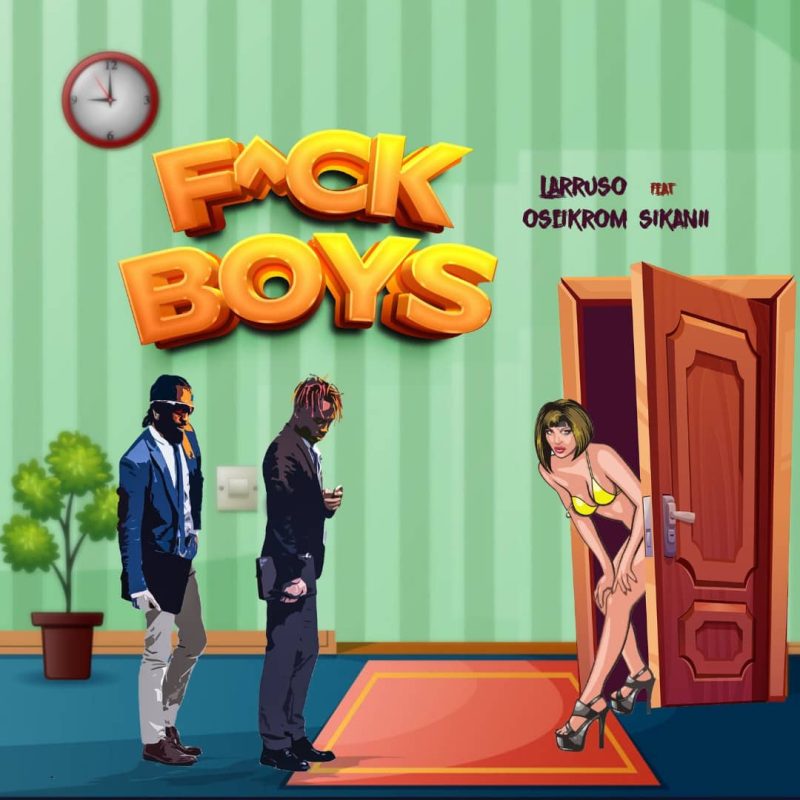A peek at the visceral, spiritualised world of RATA Orkestra
Written by ABR on 13/12/2022

In partnership with Esplanade – Theatres on the Bay
What’s in a name? In the case of RATA Orkestra, everything. Literally translating to ‘flat orchestra’ in Malay, the name of this new ensemble of Singaporean musicians and artists captures its bold artistic goal: to subvert the idea of an orchestra with a commitment to an egalitarianism not only between its musicians, but with the audience itself.
On a more literal note, the name stems from the circumstances in which the project was commissioned: as a performance presented on a flat surface, without the typical hierarchies of stage and seats that divide performers and their audience. That surface in question is the Singtel Waterfront Theatre, the newest venue at Esplanade – Theatres on the Bay, which this December will host ‘RATA: new grounds, new sounds’, the debut performance by the six-member RATA Orkestra and a programme of ‘In New Light – A Season of Commissions’, which celebrates the Esplanade’s 20th anniversary.
RATA Orkestra is far more than a sum of its parts, but what parts those are: each member of RATA is an acclaimed musician and known quantity within Singapore’s music scene and wider artistic ecosystem. RATA’s artistic director is Safuan Johari, a composer, producer and sound designer also known as Max Lane. Joining Safuan in RATA is his bandmate – in both the art rock band Tiramisu and electronic duo NADA – Rizman Putra, also a veteran performer and theatre practitioner.
Also on vocal duties in RATA Orkestra is weish of the bands sub:shaman and .gif, while the instrumentalists in RATA are Andy Chia (of SAtheCollective) on dizi, the Chinese transverse flute; Cheryl Ong (of The Observatory) on drums; and Azrin Abdullah on the oud. The Orkestra will be joined at their debut performance by the Javanese neo-soul musician Nova Ruth Setyaningtyas.
Ahead of ‘RATA: new grounds, new sounds’ at the Esplanade on December 29-31, NME speaks to Safuan, Rizman and weish about the intricacies of improvisation, how RATA’s music-making turns into world-building, and much more.

Safuan, Rizman – what’s it like for you to start working with all these other amazing musicians and having that change the dynamic?
Safuan Johari: “My musical and artistic relationship with Rizman, when compared to the rest, is definitely way different. We have NADA, we have Tiramisu. And we’ve had theatre productions where he’s directing or acting and I’m doing the sound and music. But our history helps us compartmentalise how we approach things. Fair enough: sometimes we humans tend to fall into the comfort zone, but we have been very conscious about it. And I know that despite all the different collaborations that Rizman and I had or have, I know that there’s still a lot more in his toolbox.”
Rizman Putra: “It’s like – you’ve known this person for so long, then you have to ‘unfriend’ him for a bit just to find a new territory. Then after that you are friends with him again. That’s beautiful for me.”
“The music is otherworldly. Something that is familiar, but you can’t define. And I think it has to be experienced” – Rizman Putra
Safuan: “We first started to collaborate in 2012. All this while, I’ve known what he does, but I always hesitated to find out about his thought processes. With RATA, we have the luxury of time and space – each time we are devising or at a workshop, we have at least four solid hours. We go for 20-30 minute takes, then we just have to unwind and ask each other what they’re doing. Then he’ll show me his drawings or say he’s looking at lines on the floor as a catalyst to just come up with voicings. He even told me that the body moves first, and then the sound is the result. Only when we started the RATA process, then I realised: oh, that’s what he has been doing.”
Rizman, you’re such a physical performer in NADA and Tiramisu. It sounds like that physicality is still in the picture for RATA, but is it different?
Rizman: “It is different because I had to find a way to restrain myself. I think that’s the one of the most important things: to restrain and to make sense of myself in the space, to be more sensitive, to listen to each other. Being in Tiramisu or NADA, I’m being the performer, a central focus. But this time around, I just need to find my individual presence in presence of the rest.”
weish, how’s it been doing these sessions and rehearsals with the RATA Orkestra?
weish: “Being the baby of this family, in terms of my experience with improv in general and this side of experimental music, has been quite scary. Just having the tools to improvise is a language that I hadn’t learned how to speak at the start. Having Saf and the rest just guide me through like, ‘this language is not do re mi fa so’. It’s shapes and colors, structures, scales, or thinking about rhythm and melody and deconstructing that and whittling it down to even smaller atoms – and how to play with those things meaningfully. It’s purposeful and it’s a journey. It becomes a conversation with its own internal logic that I took a while to learn and am still learning. It’s been fun and very unfamiliar. And much, much more than I ever thought improvisation entailed.”
How would each of you describe the music you’ve been making together?
Safuan: “Everything is so visceral. I’ve just listening to the recordings every day, and the composition is so hard to put into words. Most of my press run has been like this: I can’t give a bite-sized answer. And to me, that’s the beauty of it right now.”
Rizman: “How to describe it? I am not sure if it is something new. I mean, originality is a myth. But I can say it is something otherworldly. Something that is familiar, but you can’t define. And I think it has to be experienced. That’s the most important. It’s pretty immersive.”
weish: “I know immersive is a bit of a dirty word in its overuse in almost every context. But I guess to echo what Rizman is saying, the immersion is not just like ‘wow, there’s surround sound, there’s visuals’. But it’s what I was saying earlier about an internal logic that is not as explicit or accessible as a pop song or traditional music set with a narrative that is easy to follow. But it’s buying into this abstract, visceral journey and charting your own sort of emotional or visceral reaction through it from start to finish and crafting your own kind of story, as you follow.
“We have our own story and we are following it… Anyone who buys in can become a part of this world that is very engaging and alive” – weish
“We do have movements. Like as much as isolated moments are always improvised, we have structures and shapes and movements within the piece – chapters that we have composed. So we have our own story and we are following it… Anyone who buys in can become a part of this world that is very engaging and alive. One example of that is we’re doing this thing with invented languages, because we don’t ever want to have any semantic meaning. Rizman and I will just have this half-sung, half-spoken conversations in nonsense syllables. Sometimes he makes me laugh or I feel I’m being told a joke, and I’m genuinely tickled. And sometimes it feels like he’s telling me his deepest, darkest secret, and I feel very moved. That’s been my experience: surrendering to the visceral emotion of it. Taking what you will through that journey is what I hope everyone feels listening to it and being a part of it.”
Safuan: “I guess is what we are constantly doing while playing every single set is world-building. In that process, the journey seems different for each individual musician. I hope that audience members will discover their own journey in this world.”

Safuan, I know you’ve done some work around questioning ideas of traditional music. And in RATA Orkestra, there are Andy and Azrin who play the dizi and the oud respectively. How has it been having these ‘traditional instruments’ in the context of the Orkestra and working with them?
Safuan: “One thing I’ve been very conscious of since the start is to erase the line that separates traditional and contemporary, traditional and experimental, and just see each instrument as a sound maker, as a sound creator with the musician itself. Even for ourselves or the musicians like Andy or Azin, it’s trying to push them to see how they can relearn that instrument or view it in a different way. I know Andy has been doing a lot of that and it’s been very satisfying to do this with Azrin. The oud is such a beautiful instrument, the sound and melodies that it can make.”
Rizman, weish, what’s it been like as vocalists to work with Andy and Azrin?
weish: “Just very enlightening. At the start, the very first session, we went station to station to each other’s setups to understand a bit about each other’s instruments and people’s backgrounds. Learning about instrumentalists like Azrin, Andy and Cheryl, who are so studied in their traditional fields and the history and craft of the oud, the dizi, the drums, and learning how they consciously choose to challenge or contemporise tradition and the flak that they get from the purists or the traditionalists for how they decide to fuck up or modify their sound and instruments – it’s just fascinating.
“And then from that point, watching them do it in the flesh has made me think a lot about what makes something traditional and what makes it fresh and interesting while still retaining its cultural roots. It’s just been enlightening that way, because I’ve never had that kind of rooting in the cultural instrument community and seeing how rich that tension is has been quite illuminating.”
“What we are constantly doing while playing every single set is world-building… I hope that audience members will discover their own journey in this world” – Safuan Johari
Rizman: “For me, especially playing with Azrin, sometimes I get drawn into his performance. It’s as if I switch from a performer into a part of the audience. He’s like the Pied Piper. So one word to describe the feeling playing with Azrin, Andy and Cheryl, who are very trained like weish said – I think it’s very spiritualised. You get into this zone where you feel enlightened and that kind of space is for me a sacred space – that I sometimes choose to avoid. But I really appreciate them bringing me there. When other musicians give you something and you receive it, you try to go on this journey with them.”

Do you have any particular hopes for how the audience receive the performances?
Safuan: “There a lot of new things [at play] here. There’s a new space. It’s a new band. My intention was that rather than have something super focused and centralised, in the sense of the conventional stage setup, as the audience move around, other than discovering the sounds and the musicians is they discover the world – back to that world-building I was talking about. It’s beyond each individual musician’s contribution. It’s beyond music itself.
“For the production we have great designers working with us – Adrian [Tan] on lights, [Akbar] Syadiq on the set, and Brandon [Tay] on visuals – and it will come together to create the space for the audience to explore. The artistic process itself has been quite an explorative journey, and I want to transpose this experience to the audience themselves too. They are discovering as much as we are discovering new things.”
The RATA Orkestra perform ‘RATA: new grounds, new sounds’ at the Singtel Waterfront Theatre at Esplanade on December 29-31. Find more info and get tickets here
The post A peek at the visceral, spiritualised world of RATA Orkestra appeared first on NME.



 ABR Group
ABR Group